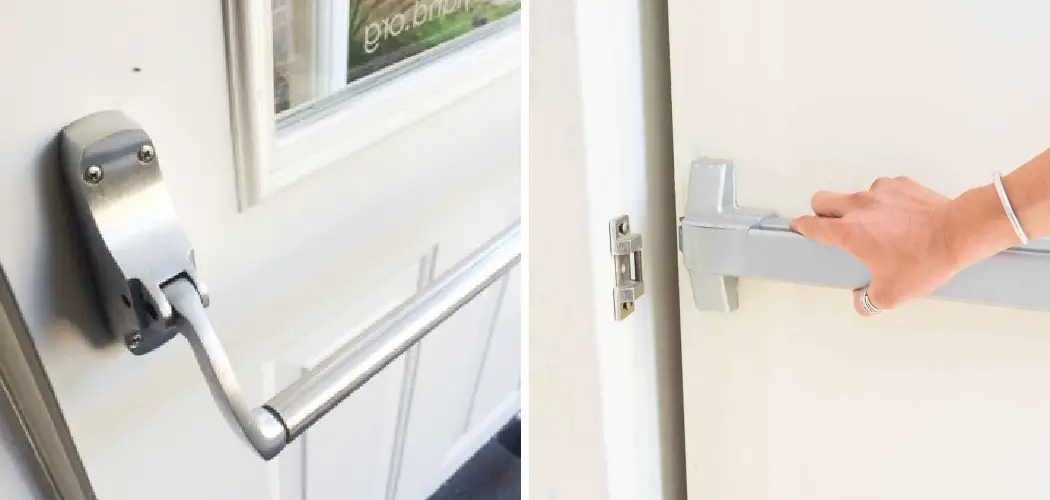Are you tired of carrying a key around just to lock your push-bar door? Or do you often find yourself locked out because you forgot the key inside? Don’t worry—there are alternative ways to secure your push-bar door without a key.
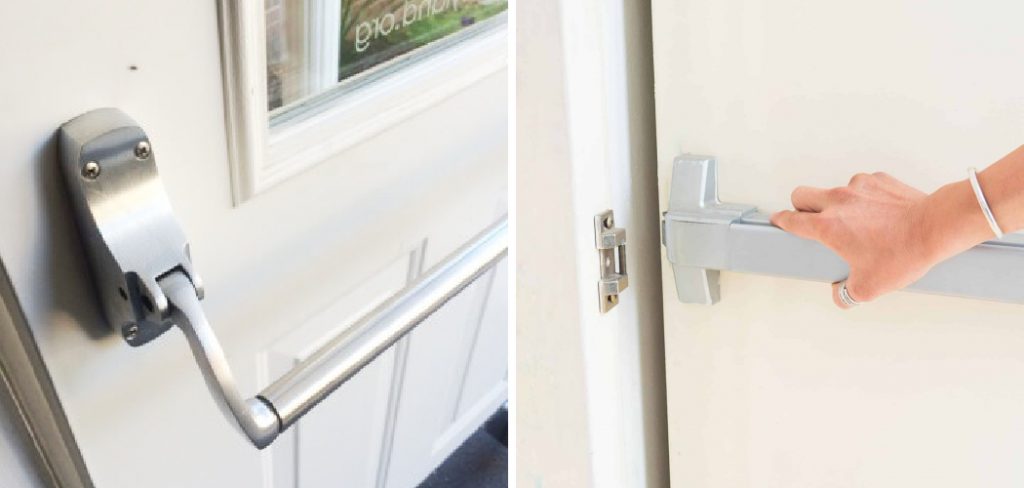
Locking a push bar door without a key is a tricky endeavor at first glance. However, with the right knowledge and tools, it’s entirely possible and can be done with relative ease. This guide will walk you through the necessary steps and precautions to securely lock a push bar door from the inside without the need for a key.
Whether you’re managing a public building, a school, or just looking to improve the security of your own premises, understanding how to lock a push bar door without key can provide peace of mind and enhanced safety for everyone involved.
What are the Benefits of Locking a Push Bar Door Without a Key?
Before we dive into the steps, let’s first explore why you might want to consider locking your push bar door without a key. Here are some potential benefits:
- Convenience: Carrying around a key can be cumbersome and easy to forget. Knowing how to lock a push-bar door without one eliminates the need for a key altogether.
- Improved Security: Push bar doors are commonly used in public and high traffic areas, making them susceptible to unauthorized access. By locking the door without a key, you can better control who enters and exits your space.
- Cost-effective: Some push bar door locks can be expensive to replace or repair if keys are lost or stolen. Knowing how to secure the door without a key can save you money in the long run.
- Emergency Preparedness: In case of an emergency, such as a fire or active shooter situation, locking a push bar door from the inside can provide added protection and prevent unauthorized access from the outside.
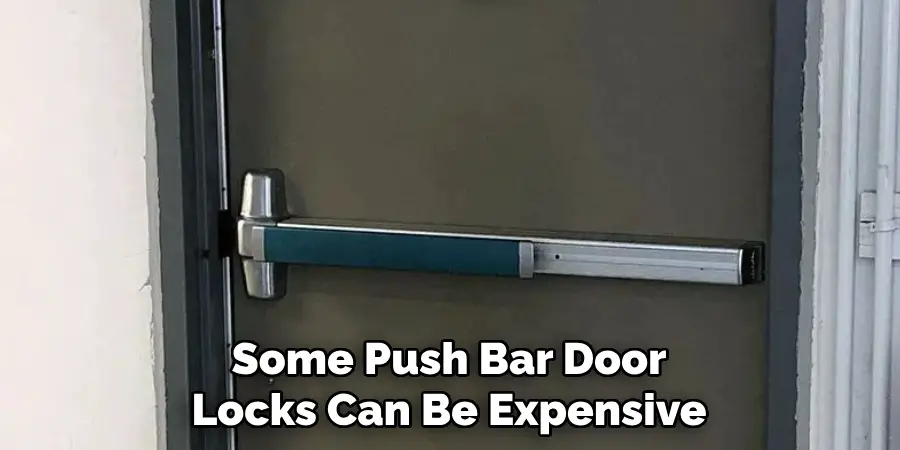
Now that we’ve established some potential benefits, let’s move on to how to actually lock a push bar door without a key.
What Will You Need?
Before attempting to lock a push bar door without a key, make sure to gather the necessary tools and equipment:
- A Phillips head screwdriver
- A small flathead screwdriver or a coin (depending on the type of lock)
- Basic knowledge of push bar door mechanisms
Once you have these items at your disposal, you’re ready to begin the process.
10 Easy Steps on How to Lock a Push Bar Door Without Key
Step 1: Identify the Type of Push Bar Door
Before attempting to lock a push bar door without a key, it’s important to first identify what type of push bar door you have. There are two main types:
- Single-point Locking: This type of push bar door has a single locking mechanism in the middle of the door.
- Multi-point Locking: This type of push bar door has multiple locking points on both sides of the door.
Step 2: Locate the Lock Cylinder
The lock cylinder is a crucial component of the door’s locking mechanism. For push-bar doors, the lock cylinder is typically located either in the center of the push bar itself or near the top or bottom of the door frame, depending on the door’s design. This is where you would normally insert a key to lock or unlock the door.
To proceed without a key, you need to understand how your specific door’s lock cylinder is configured. In some cases, the cylinder may have a small slot or hole that allows for manual manipulation with a flathead screwdriver or similar tool. This step is essential, as it sets the foundation for the rest of the process, enabling you to engage the lock without the need for a traditional key.
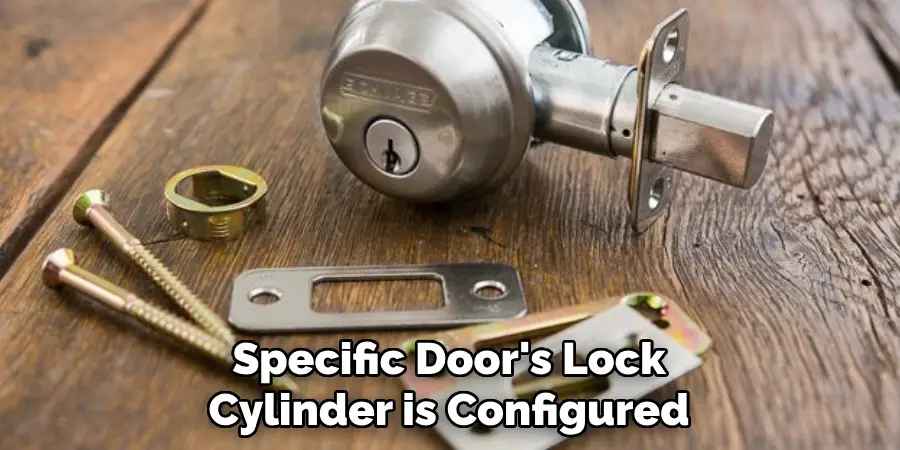
Step 3: Remove the Push Bar Cover
To access the internal locking mechanism, you’ll first need to remove the push bar cover. This is typically done by unscrewing the Phillips head screws that hold the cover in place. Start by locating these screws on either side of the push bar.
Using your Phillips head screwdriver, carefully remove each screw and set them aside in a safe place. Once all screws are removed, gently lift the cover off to reveal the internal locking mechanism of the push bar. This step is crucial for gaining access to the parts you’ll need to manipulate in order to lock the door without a key.
Step 4: Locate the Locking Mechanism
Inside the push bar, you’ll find the locking mechanism that secures the door. Depending on the model of your push bar door, the mechanism might look different, but typically, it will be a series of metal bars or a latch assembly. Carefully examine this area to find the component that moves when the push bar is engaged.
This is usually connected directly to the lock cylinder you identified earlier. Understanding the layout of this mechanism is crucial for the next steps, as you’ll need to manipulate it directly to lock the door without a key. Keep an eye out for any levers, bolts, or sliders that appear to control the locking action, as these are the components you’ll be working with.
Step 5: Manipulate the Locking Mechanism
With the internal locking mechanism exposed, the next step is to manually engage the lock. Locate the lever, bolt, or slider identified in the previous step that controls the locking action. If your push bar door is a single-point locking system, you will likely see a lever or bolt that, when moved, extends into the door frame, securing the door. For multi-point locking systems, there may be several components to manipulate.
Carefully push, pull, or slide the mechanism into the locked position using a small flathead screwdriver or similar tool. It’s important to do this gently to avoid damaging the components. You may feel some resistance as the locking parts engage with the frame of the door. Once in place, the door should be securely locked from the inside without the need for a key.
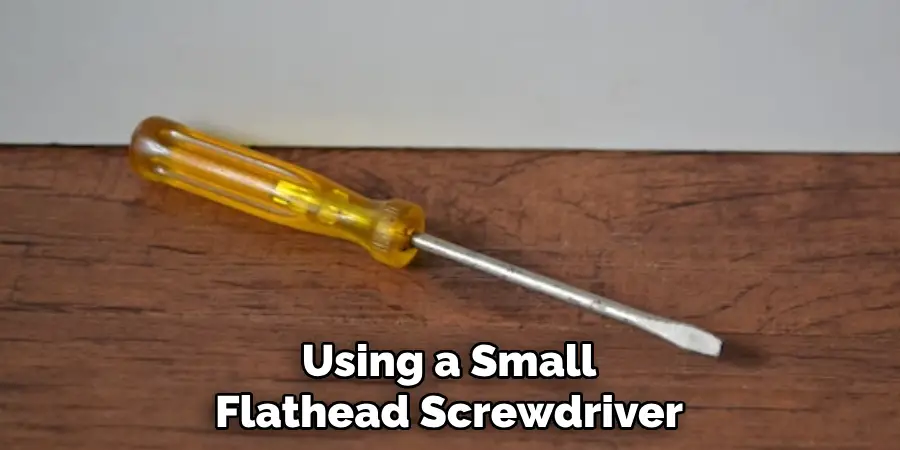
Step 6: Test the Lock
After manually engaging the locking mechanism, it’s critical to test the lock to ensure it’s properly secured. Press down on the push bar or attempt to open the door from the outside to verify that the door does not open. The locking mechanism has been successfully engaged if the door remains closed and resists opening attempts.
If the door opens or feels loose, you may need to re-examine the locking mechanism and repeat the previous step to ensure it is correctly engaged. Testing the lock is an essential part of the process, as it confirms the safety and security of the door without the use of a key.
Step 7: Secure the Push Bar Cover Back in Place
Once you have successfully locked the door and tested the lock to ensure it is secure, the next step is to reattach the push bar cover. Carefully place the cover back over the internal locking mechanism, aligning it properly with the push bar itself. Retrieve the Phillips head screws you set aside earlier and, using your screwdriver, replace them with their respective holes.
Tighten each screw snugly to ensure the cover is securely fastened, but be careful not to over-tighten, as this could strip the screws or damage the cover. This step not only conceals the internal mechanism, preserving the aesthetic and functional design of the door but also protects the locking mechanism from tampering or damage.
Step 8: Apply a Temporary Lock if Necessary
In some cases, you may apply a temporary lock to further secure the push bar door, especially if the manual lock you engaged does not feel sturdy enough. Temporary locks can include portable devices that clamp onto the door and frame or add-on locking mechanisms that can be easily installed and removed.
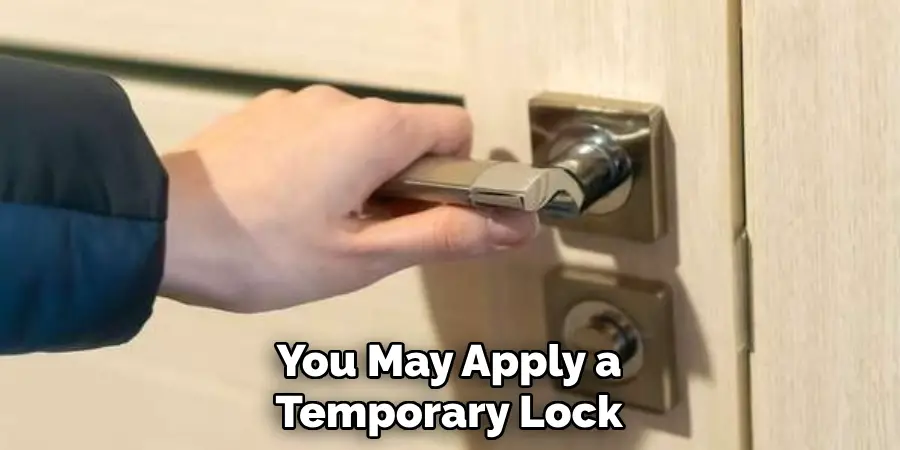
These devices are particularly useful in emergency situations or when additional security is temporarily required. Ensure that any temporary lock used does not violate local fire codes or safety regulations, as egress during an emergency should never be compromised. Select a temporary lock that is compatible with your door’s design and structure for optimal security.
Step 9: Regularly Check and Maintain the Locking Mechanism
It is important to periodically check the locking mechanism of the push bar door to ensure it remains in good working order. Over time, repeated use can wear down the components, leading to potential security vulnerabilities.
Regular maintenance checks should include verifying that the lock engages and disengages smoothly, checking for any signs of damage to the locking mechanism or cover, and ensuring that all screws and components are tight and secure.
If any issues are discovered during these checks, address them immediately to maintain the door’s security integrity. Proper maintenance not only extends the life of the locking mechanism but also ensures the safety and security of the premises.
Step 10: Document the Process
For future reference and maintenance,
it’s advisable to document the steps you’ve taken to lock the push bar door without a key. Keep a record of the type of locking mechanism your door employs, any specific tools used in the process, and any challenges or unique steps required for your specific door model. This documentation can be invaluable for future security assessments and troubleshooting, as well as if the locking mechanism needs to be replaced or repaired.
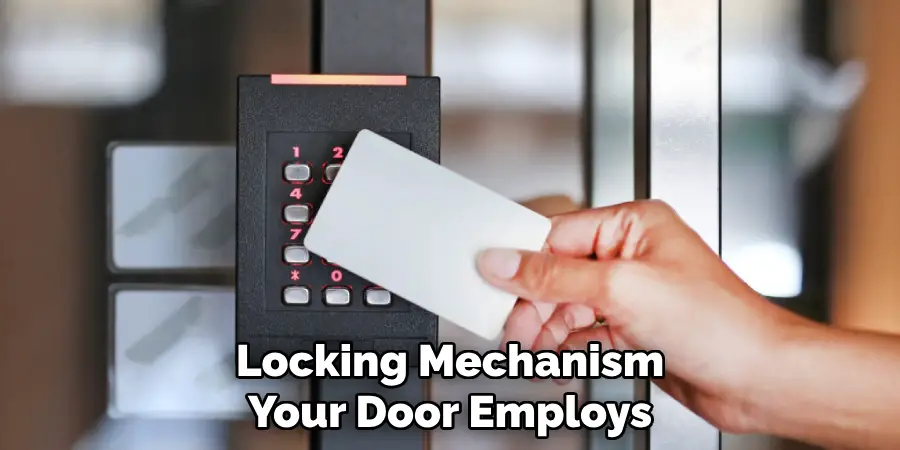
Additionally, having a detailed record can assist anyone else responsible for the security of the building in understanding the locking process and maintenance history of the door. This proactive approach ensures continuity in security practices and aids in the efficient management of building safety.
By following these steps, you can successfully lock your push bar door without a key.
5 Additional Tips and Tricks
- Use a Door Wedge or Stopper: Placing a sturdy door wedge or stopper at the base of the door can effectively prevent it from being opened from the outside, providing a simple and cost-effective solution.
- Install an Exit Alarm: Adding an exit alarm to the push bar door can deter unauthorized exits or entries, as the loud noise will alert people nearby of any unauthorized use of the door.
- Apply Safety Chains or Cables: Attaching a safety chain or cable around the push bar and securing it to a stable point on or near the door frame can temporarily lock the door from the inside.
- Use a Removable Crossbar: A removable metal or wooden crossbar can be custom-made to fit across the width of the door, resting in pre-installed brackets on either side of the door frame. This can effectively block the door from opening.
- Implement an Electromagnetic Lock: For a more sophisticated solution, installing an electromagnetic lock at the top of the door can securely lock it without the need for a physical key. This system can be engaged or disengaged using a switch or a security system control panel.
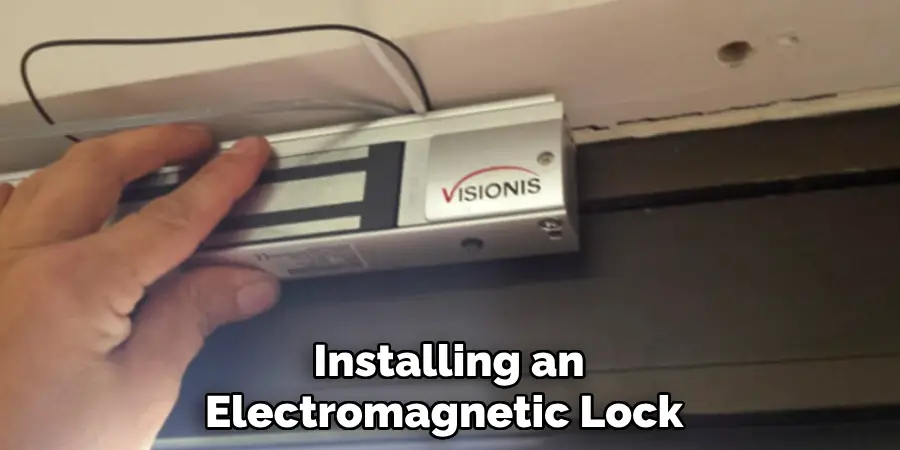
With these additional tips and tricks, you can have peace of mind knowing that your push bar door is secure even without a key.
5 Things You Should Avoid
- Do Not Obstruct Emergency Exits: Never compromise safety by locking a push-bar door so that it cannot be easily opened from the inside in case of emergencies. Always comply with local fire safety regulations.
- Avoid Using Non-Durable Materials: Do not use makeshift locks or barriers made from materials that are not durable or strong enough to secure the door effectively.
- Don’t Neglect Regular Maintenance: Failing to maintain and inspect your locking mechanisms can lead to failure when you most need them. Ensure that all components are in good working condition.
- Avoid Complex Solutions That Are Hard to Manage: Implementing a locking solution that is too complex or difficult for authorized personnel to operate can lead to confusion or delays in emergency situations.
- Do Not Violate Security Policies: Ensure that any method used to lock the door without a key does not violate your building’s security policies or local laws. Always consult with a security expert or local authorities if in doubt.
By avoiding these actions, you can ensure that your push bar door remains secure and functional for its intended purpose.
Are Button Door Locks Safe?
Button door locks, also known as combination door locks, are a popular alternative to traditional key-based locks. They work by using a series of buttons or dials that must be pressed in the correct sequence to unlock the door.
This type of lock can offer convenience and added security, but it is important to choose a high-quality and properly installed button door lock for maximum safety. Here are some factors to consider when deciding if a button door lock is safe for your building:
- Durability: Make sure the buttons or dials on the lock are made of durable materials such as metal and cannot be easily manipulated or damaged.
- Complexity: Choose a combination that is not easily guessable or can be easily changed to prevent unauthorized access.
- Installation: Ensure that the lock is installed properly and securely and that there are no gaps or weaknesses in the door frame or surrounding area where someone could tamper with it.
- Maintenance: Regularly inspect and maintain the lock to ensure it is functioning properly, and replace any worn or damaged parts promptly.

Overall, a well-made button door lock can be a safe and effective option for securing a push bar door. Still, it is important to consider the quality, installation, and maintenance of the lock to ensure its safety.
How Do Push Button Locks Work?
Push button locks operate by using a series of buttons or numerical codes to unlock the door. These locks have become increasingly popular in recent years due to their convenience and ease of use, as they eliminate the need for physical keys.
To unlock a push button lock, the user must enter a predetermined code or press a specific sequence of buttons on the keypad. Once entered correctly, the lock will release and allow access to the door.
Many push-button locks also have a feature that allows for changing the code periodically, making it more difficult for unauthorized individuals to gain access. These locks are commonly used in residential homes, office buildings, and other commercial settings.
In addition to their convenience, push-button locks also provide added security, as there is no risk of losing or having a physical key stolen. However, it is important to regularly update and maintain the locking codes to ensure maximum security.
Conclusion
How to lock a push bar door without key can be achieved through various innovative and secure methods, ensuring the door remains a reliable barrier against unauthorized entry while also adhering to safety and emergency egress regulations.
From deploying simple, cost-effective solutions like door wedges or stoppers to investing in more sophisticated systems such as electromagnetic locks, there exists a range of options to suit different security needs and budgets.
However, it’s crucial to balance security measures with safety compliance, ensuring that any locking mechanism implemented allows for quick and unhindered exit in an emergency. Regular maintenance and inspection of these security measures cannot be overlooked, as they guarantee the long-term reliability and effectiveness of the locking mechanisms.
In summary, while traditional keys are no longer a necessity for securing push bar doors, responsible implementation and maintenance of alternative locking methods are key to ensuring these doors provide both secure and safe access control.

